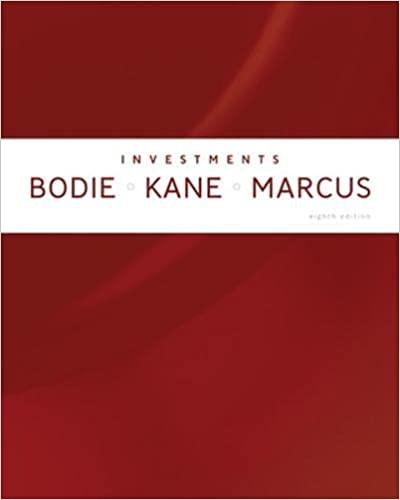6. Susan Fairfax is president of Reston Industries, a U.S.-based company whose sales are entirely domestic and
Question:
6. Susan Fairfax is president of Reston Industries, a U.S.-based company whose sales are entirely domestic and whose shares are listed on the New York Stock Exchange. The following are additional facts concerning her current situation:
• Fairfax is single, aged 58. She has no immediate family, no debts, and does not own a residence. She is in excellent health and covered by Reston-paid health insurance that continues after her expected retirement at age 65.
• Her base salary of $500,000/year, inflation-protected, is sufficient to support her present lifestyle but can no longer generate any excess for savings.
• She has $2,000,000 of savings from prior years held in the form of short-term instruments.
• Reston rewards key employees through a generous stock-bonus incentive plan but provides no pension plan and pays no dividend.
• Fairfax’s incentive plan participation has resulted in her ownership of Reston stock worth
$10 million (current market value). The stock, received tax-free but subject to tax at a 35%
rate (on entire proceeds) if sold, is expected to be held at least until her retirement.
• Her present level of spending and the current annual inflation rate of 4% are expected to continue after her retirement.
• Fairfax is taxed at 35% on all salary, investment income, and realized capital gains. Assume her composite tax rate will continue at this level indefinitely.
Fairfax’s orientation is patient, careful, and conservative in all things. She has stated that an annual after-tax real total return of 3% would be completely acceptable to her if it was achieved in a context where an investment portfolio created from her accumulated savings was not subject to a decline of more than 10% in nominal terms in any given 12-month period. To obtain the benefits of professional assistance, she has approached two investment advisory firms—HH Counselors
(“HH”) and Coastal Advisors (“Coastal”)—for recommendations on allocation of the investment portfolio to be created from her existing savings assets (the “Savings Portfolio”) as well as for advice concerning investing in general.
a. Create and justify an investment policy statement for Fairfax based only on the information provided thus far. Be specific and complete in presenting objectives and constraints. (An asset allocation is not required in answering this question.)
b. Coastal has proposed the asset allocation shown in Table 28F for investment of Fairfax’s
$2 million of savings assets. Assume that only the current yield portion of projected total return (comprised of both investment income and realized capital gains) is taxable to Fairfax and that the municipal bond income is entirely tax-exempt.
Critique the Coastal proposal. Include in your answer three weaknesses in the Coastal proposal from the standpoint of the investment policy statement you created for her in ( a ).
c. HH Counselors has developed five alternative asset allocations (shown in Table 28G ) for client portfolios. Answer the following questions based on Table 28G and the investment policy statement you created for Fairfax in ( a ).
i. Determine which of the asset allocations in Table 28G meet or exceed Fairfax’s stated return objective.
ii. Determine the three asset allocations in Table 28G that meet Fairfax’s risk tolerance criterion.
Assume a 95% confidence interval is required, with 2 standard deviations serving as an approximation of that requirement.
d. Assume that the risk-free rate is 4.5%.
i. Calculate the Sharpe ratio for Asset Allocation D.
ii. Determine the two asset allocations in Table 28G having the best risk-adjusted returns, based only on the Sharpe ratio measure.
e. Recommend and justify the one asset allocation in Table 28G you believe would be the best model for Fairfax’s savings portfolio.
Step by Step Answer:






